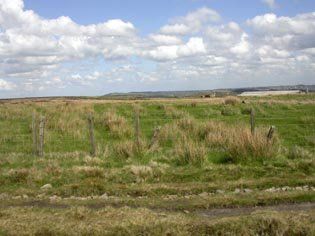- Home
- General Information
- Sightings
- Birding Locations
- Publications
-
Archive 1987 - 2018
- A Checklist of Bradford's Birds
- Swans & Geese
- Ducks & Sawbills
- Divers, Grebes, Herons
- Eagles, Kites & Harriers
- Buzzards & Hawks
- Falcons
- Grouse, Quail, Crakes
- Waders - Part1
- Waders - Part 2
- Skuas and Gulls
- Terns & Auks
- Doves, Nightjar & Alpine Swift
- Hoopoe, Wryneck, Larks, Pipits
- Owls, Woodpeckers
- Thrushes
- Warblers and Tits
- Shrikes and Crows
- Sparrows, Buntings and Finches
- Gallery
Airedale (Bingley & Baildon)
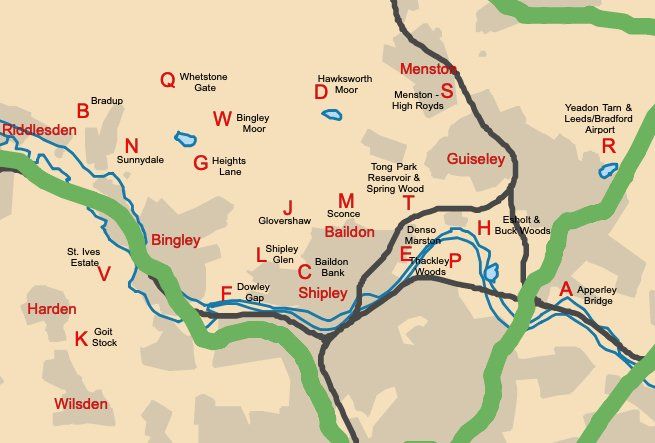
Creative Commons Attribution-Share Alike 3.0 Unported with additions by Bradford Ornithological Group (2018).
A Apperley Bridge
B Bradup
C Baildon Bank
D Hawksworth Moor
E Denso Marston, Baildon
F Dowley Gap & Hirstwood
G Heights Lane, Eldwick
Airedale
H Esholt & Buck Woods
J Glovershaw
K Goit Stock, Harden
L Shipley Glen
M Sconce
N Sunnydale
P Thackley Woods
Q Whetstone Gate
R Yeadon Tarn & Leeds/Bradford Airport
S Menston - High Royds
T Tong Park Reservoir & Spring Wood
V St. Ives Estate
W Bingley Moor
C Baildon Bank
This area covers the hillside above Baildon Green and runs east to the main road between Baildon and Shipley and east to almost Shipley Glen. The stone face on the hill has been worked and quarry spoils are in evidence. Small trees such as silver birch have reclaimed the area along with brambles.
All three woodpeckers have been recorded but this is a really good site for Green Woodpecker. Ants amongst the boulders are an obvious attraction to this species. Kestrel and Tawny Owl also take advantage of the crevices. The small trees dotted about ensure that most woodland species are seen such as Greenfinch, Chaffinch, Bullfinch and Tit family.
Woodcock rodes the area and Jays, Nuthatch and Treecreeper stray from the Shipley Glen Wood into this area. The bank sees good numbers of Swifts hawking during the summer whilst winter brings Fieldfare, Redwing and Redpoll searching for food. With a good number of birds recorded, it’s not surprising that Sparrowhawk is sighted regularly.
nearby sites: Shipley Glen, Hirstwood, Glovershaw and Sconce
F Dowley Gap Bingley.
Dowley Gap Sewage Works hold good numbers of Pied Wagtails during the winter. A wintering gull roost is a permanent feature along with other birds seeking refuge such as Meadow Pipit and Grey Wagtail. In spring and summer, Swallow and Swift feed over the settling tanks. The nearby Hirst Woods are an excellent site for the typical mixed woodland species, including all three species of woodpecker, Nuthatch and Treecreeper. Kingfisher can be seen along the canal and River Aire and Common Sandpiper, Goosander and Dipper are not unknown. Firecrests have been seen on at least two occasions and Chiffchaff often over-winter in the trees and bushes which can viewed from the aquaduct.
nearby sites: Shipley Glen and Hirstwood
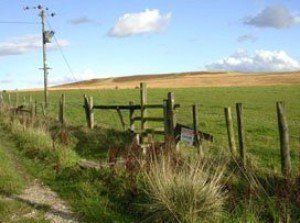
J Glovershaw, Baildon
Glovershaw area is best approached along the lane to Golcar Farm. The fields on either side of the lane and the trees surrounding Golcar Farm, provide a good habitat for a range of species. Golden Plover form flocks in late winter and Fieldfare and Redwing feed in the fields. In spring, breeding Lapwing dominate the area and Curlew, Snipe and more recently Redshank breed in the wetter pasture to the east. In summer, Swallows breed at the farm, Goldfinch feed on the thistle stalks and a range of warblers can be seen and heard in the bushes. In May the spectacle of displaying Snipe, active Curlew and the ever alert Lapwings are a worthy sight. Wheatears, Whinchats and the more unusual Yellow Wagtail and Ring Ouzel have all been seen on spring passage. At the end of summer and into early autumn, these species return, with the added bonus of Redstart and Spotted Flycatcher turning up. Stonechat are regular breeders and more recently Grasshopper Warbler has been present. On the higher ground, within the Golf Course area Skylark, Reed Bunting, Meadow Pipit, Linnet and Red Grouse breed. The fairways are always worth checking for feeding birds, particularly for birds of prey and owls.
Nearby sites: Shipley Glen, Sconce
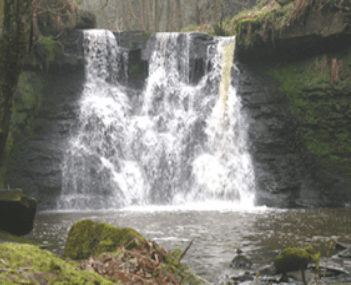
K Goit Stock, Harden Goit Stock is a wooded valley that follows the course of Harden Beck from the Hallas Bridge to the Malt Shovel Pub at Harden. It is predominantly a Silver Birch woodland with a few other more mature trees scattered throughout. The beck forms a couple of waterfalls, the larger of the two is pictured. There is an opening where a caravan park is situated and the woods are surrounded by grazing pasture. The bird life of Goit Stock is limited to common woodland species, though it can be good for Wood Warblers in May. Spotted Flycatchers can be found at Hallas Bridge from May onwards. There are at least two pairs of Dipper present along the river and Grey Wagtail usually breed. Kingfisher also inhabitant the river but are hard to see. Nuthatches have moved in during recent years, no doubt due to the maturing of the woods.
L Shipley Glen Birding in and around Shipley Glen can be quite rewarding. You would expect to see most common species in a stroll through the woods and the open moorland offers a fine contrast with good views of upland birds. Nuthatch has established itself in the mature deciduous woodland along with all three woodpeckers, though Lesser Spotted has not been seen for a few years. Treecreeper and Jay are resident breeders and Grey Herons congregate in the fields at the bottom of the Glen below the mill lodge. Little Owl are nearly always present in the area around Brackenhall and the open moorland to the north of the Glen is alive with Willow Warblers and Blackcaps in spring. Grasshopper Warbler has bred in thick undergrowth along the Glen Road and these fields and upland above the Glen offer habitat for Curlew, Lapwing, Meadow Pipit and Reed Bunting in summer and Fieldfare, Redwing and Mistle Thrush in winter. Tree Sparrows can seen in the hedgerows, particularly at Dobbrudden Farm, whilst Kestrels hunt from wires and Whitethroats sing from prominent the bracken.
nearby sites: Hirstwood, Glovershaw, Eldwick and Sconce
L Hirstwood, Shipley The wooded ares of Hirstwood on the south side of the River Aire and Bull Copy Woods on the north provide the birder with an opportunity to see a good range of woodland species such as Nuthatch, Treecreeper, Jay, Great Spotted Woodpecker and Sparrowhawk. This area has long been an established site for the elusive Lesser Spotted Woodpecker and Bull Copy Woods and the nearby Coach Road at the bottom of Shipley Glen are good places to watch for this bird. Kingfisher can be seen along the canal and River Aire and Common Sandpiper, Goosander and Dipper are not unknown. A large roost of Grey Herons can be seen throughout the autumn and winter on the 'muck-heap' to the north of Bull Copy Woods.
nearby sites: Hirstwood, Dowley Gap Sewage Works and Shipley Glen
N Sunnydale
is situated just above East Morton village and is an attractive area for walking. From the reservoir, and from where Morton Beck originates, Grey Wagtail and Dipper can be seen often right down to where the beck meets the River Aire.
The reservoir holds Mallard, Grey Heron and Goosander but is liable to disturbance from fisherman. However there is a wood surrounding the water and this holds a good variety of species such as – Green Woodpecker, Nuthatch, Sparrowhawk, Bullfinch, Blackcap, Willow Warbler, Great Spotted Woodpecker, Treecreeper, Siskin, Redpoll, finches including at times Brambling, plus Jay and thrushes.
The path that takes you above the wood and on to the edge of the moors at Bradup, where Little Owl, Linnet, Red-Legged Partridge can be seen as well as large numbers of Stock Dove. Grey Partridge and Kestrel are seen and if lucky, Short-Eared Owl hunting the moorland fringes.
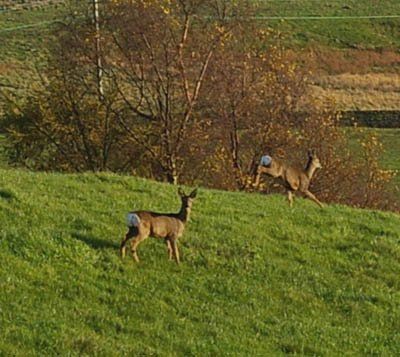
E Denso Marston, Baildon
G Eldwick
H Esholt & Buck Woods
M Sconce, Baildon
P Thackley Woods
Q Whetstone Gate
is an area north of Riddlesden, Keighley, a narrow lane leads from the East Morton to Silsden road. The lower slopes provide rough pasture for sheep farming and these give way to an expanse of heather moorland which form the south-western part of Rombalds Moor. This area is rich in bird life with breeding Meadow Pipit, Skylark, Lapwing and Curlew. Birds of prey are often seen here throughour the year. In winter Snow Bunting have been seen near at the top of the road, once you've reached the heather areas. Lower down the slopes by the scattered buildings, Snipe can be heard drumming and Cuckoo frequent this area in spring.
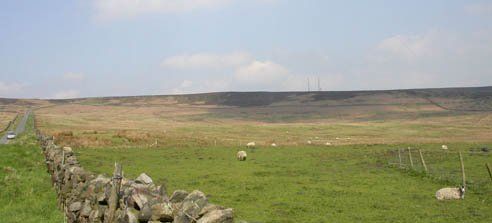
W Bingley Moor The high moors above Dick Hudson's are home not only to Red Grouse but to Lapwing, Whinchat, Stonechat, Wheatear, Curlew and Redshank. The most direct way onto the Moor is by a path that starts at the point where Heights Lane meets Otley Road, above Micklethwaite. The habitat is dominated by heather but there are mosses, rank grass and boulders within the area. Birds you can expect are Golden Plover, Red Grouse, Curlew, Meadow Pipit, Kestrel, Lapwing and Skylark. A few Snipe display.
The Moor is very seasonal with Mallard, Canada and Greylag Geese seen in the late spring when they breed. Wheatear are regularly seen on the walls and boulders on migration (arrival and departure). Whinchat are also seen occasionally.
Access is also available from the path by Dick Hudson's and from the moorland paths from Whetstone Gate or Hawksworth Moor. The plantations, particularly near Graincliffe, are worth checking for Crossbills.
Our major site for Dotterel is in this area, a short walk from Bingley Moor to the Apostle's Stones above Burley Moor. These confiding and attractive waders are often found on passage in early May.
